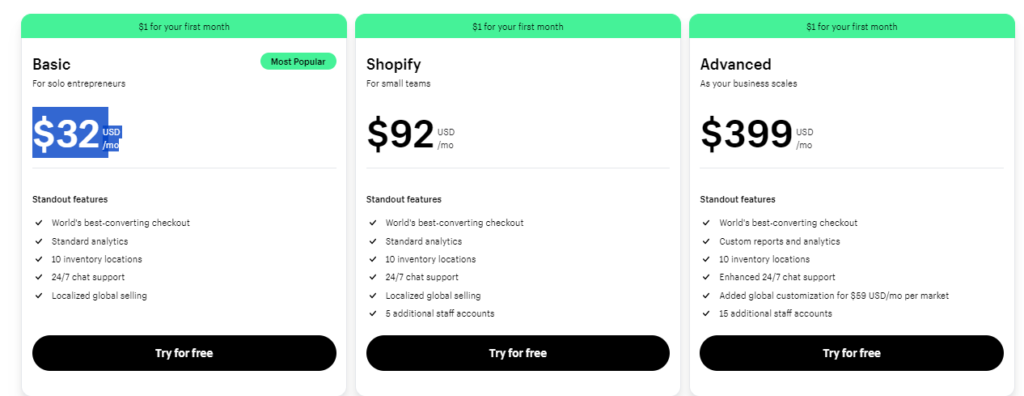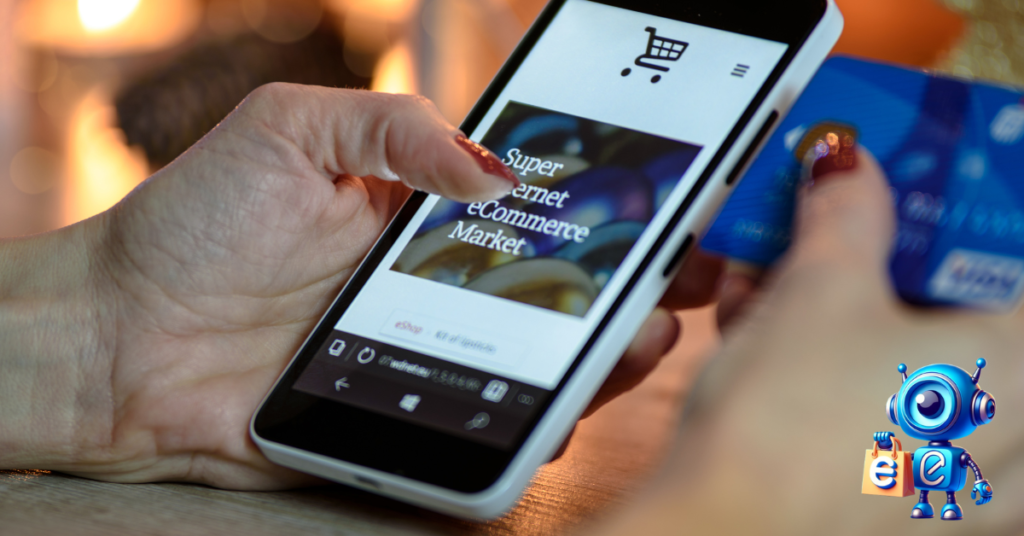Shopify powers 4.8 million online stores, and in 2024, it’s expected that a whopping 700 million customers will be making purchases through Shopify.
What’s Shopify, you ask? It’s your go-to online store builder, designed for anyone, big or small, looking to sell things on the internet.
It’s like having a super handy tool for online selling, and here’s the kicker – you don’t need to be a computer genius to use it.

Now, what’s the secret sauce making businesses lean towards Shopify?
It’s not your run-of-the-mill website builder; it’s a dynamic toolkit with user-friendly features. Businesses use Shopify because it’s one of the most user-friendly platforms that streamline everything – from transactions to keeping tabs on inventory.
So, why should you pay attention to Shopify?
Stick with us, and we’ll unveil the reasons behind its widespread adoption by businesses. No stress if you’re new to Shopify – we’re breaking it down for you.
Let’s dive into why Shopify is the go-to choice for businesses.
Table of Contents
Understanding the Shopify eCommerce Platform
Shopify isn’t just a website builder; it’s a comprehensive eCommerce platform designed to empower businesses of all sizes. Imagine having a dedicated team managing your online store behind the scenes, handling everything from inventory to payments and order fulfillment. That’s the power of Shopify in a nutshell.
Let’s explore how it excels in helping businesses like yours manage the essential aspects of running an online store:
Inventory Management
- Say goodbye to spreadsheets and manual tracking: Shopify’s intuitive interface lets you easily add, edit, and categorize your products.
- Real-time stock updates: Never run out of stock again. Shopify automatically tracks inventory levels and alerts you when to restock.
- Variants and options made simple: Offer different colors, sizes, or other product variations with ease, showcasing them clearly to your customers.
- Low-stock notifications: Get notified when inventory dips below a set threshold to avoid missed sales opportunities.
Payment Processing
- Accept payments seamlessly: Choose from over 100 payment gateways, including popular options like PayPal, Stripe, and Apple Pay.
- Secure transactions: Shopify prioritizes security, ensuring your customers’ financial information is protected with industry-standard encryption.

- Multiple currencies accepted: Expand your reach to international customers by offering them the option to pay in their preferred currency.
- Flexible payment methods: Customers should be able to pay through credit cards, debit cards, digital wallets, and alternative payment methods.
Order Fulfillment
- Streamlined order processing: Manage orders efficiently with a clear overview of each purchase, from fulfillment to delivery.
- Shipping options galore: Choose from various shipping carriers and rates to offer flexible options to your customers.

- Automated shipping labels: Save time and effort by generating shipping labels directly within Shopify.
- Inventory deductions: Orders are automatically deducted from your inventory, ensuring accurate stock levels and preventing overselling.
Additional Benefits
- Scalability: As your business grows, Shopify scales with you, offering additional features and plans to meet your evolving needs.
- Marketing tools: Built-in tools help you reach new customers, run targeted campaigns, and analyze your marketing efforts.
- App store: Access a vast app store with thousands of integrations to customize your store and add powerful functionality.
- 24/7 support: Get help from Shopify’s dedicated customer support team whenever needed.
Personalization Options for Online Store Appearance
Forget cookie-cutter websites! The benefits of personalization go beyond visual appeal. A store that reflects your brand’s unique voice fosters a more robust customer connection. They’ll feel like they’re shopping in a space designed for them, leading to increased trust, engagement, and loyalty.
Even if you’re new to eCommerce, Shopify makes creating a beautiful and functional online store a breeze. The combination of pre-designed themes and the drag-and-drop editor eliminates the steep learning curve often associated with website creation, allowing you to focus on what truly matters – your brand and your products.
Dive into a World of Themes: Imagine browsing a library with design possibilities. That’s what Shopify’s theme store feels like! Explore a diverse collection of professionally crafted themes, each with a unique style and feel. Whether you’re aiming for sleek and modern, warm and inviting, or anything in between, you’ll find a template that perfectly represents your brand identity.
Effortless Customization with Drag-and-Drop: Leave the coding jargon behind! Shopify’s intuitive drag-and-drop editor puts the power of customization in your hands. Arrange elements, adjust colors, and personalize layouts – all without writing a single line of code. This straightforward interface makes it easy for anyone without technical expertise to create a website they’re proud of.
So, consider something other than a generic online store. Embrace the power of personalization with Shopify and create a unique shopping experience aligned with your brand’s essence. Remember, your website is an extension of your business, and it should tell your story in a way that captivates your audience.
Read Also:
- Top 5 Ecommerce Chatbots For Merchants Selling Online
- How To Create Instagram Posts With AI (5 Easy Steps)
- Top 5 Shopify Auto Checkout Bots: Boost Online Sales
- Top 5 Best Shopify Bots For Boosting Your E-Commerce
- Ultimate Guide To Picking A Good Bot For Shopify Store
Building a Shopify Site: DIY vs. Hiring a Shopify Agency
Shopify’s flexibility attracts independent entrepreneurs and established businesses seeking to develop an online store. But before diving in, a critical decision awaits: should you make your Shopify site yourself (DIY) or entrust the journey to a professional agency? Let’s investigate each approach to understand what you’re looking for.
DIY Shopify: Complete Control
The DIY route offers the ultimate control. You’re the captain, charting your course from theme selection to layout customization. Every aspect of your online store rests in your capable hands. However, be prepared for a learning curve.
Mastering Shopify’s platform and design principles takes time and dedication. Expect to troubleshoot technical hurdles and handle any coding needs yourself. While cost-effective, the DIY approach demands your valuable time and effort.
This path is ideal for tech-savvy individuals who thrive on learning and problem-solving. To navigate the uncharted waters, utilize Shopify’s tutorials, guides, and community resources. Consider AI assistants like eCommercebot for specific tasks, but remember, the ultimate responsibility lies with you.
Hiring a Shopify Agency: Professional Guidance
If navigating the unknown seems daunting, consider enlisting a Shopify agency. These seasoned navigators possess the expertise to steer your ship through the eCommerce waters. They handle the technical complexities and design intricacies and provide insights to optimize your store’s performance.
With an agency, a team of experts will ensure your online presence is polished, functional, and high-performing. While this option saves you time and effort, it comes at an additional cost. But remember, the potential return on investment can be significant. Hiring an agency is ideal for businesses seeking a professional, high-performing store, mainly if they have limited time or technical expertise.
How Should You Start Your Shopify Website?
The good news is that the DIY vs. agency debate is sometimes an either-or choice. Many businesses adopt a hybrid approach. They start with the DIY route, build their store’s foundation, and then outsource specific tasks like design, marketing, or complex integrations to an agency.
Ultimately, the best path depends on your unique circumstances. Consider your business goals, budget, and timeline—research agencies with experience in your industry and a portfolio showcasing relevant projects. Ensure clear communication and understanding with DIY resources and agencies to articulate your vision and expectations.
Building a successful Shopify store isn’t a one-size-fits-all journey. The best way forward is to choose the path that aligns with your resources, skills, and goals.
Bonus Tip: You can integrate the power of AI with Shopify to track your shop’s performance and gain more insight on how you can boost your sales.
How to Use Shopify for Your eCommerce Business
Shopify empowers anyone to build a thriving online store, but where do you begin? Fear not! This roadmap will guide you through the five essential steps to start your Shopify journey, transforming your business idea into a digital reality.
Choosing Your Course
Shopify offers various subscription plans catering to different needs and budgets. Start by exploring the Basic Shopify plan, which is ideal for beginners, and then scale up as your business grows. When selecting, consider factors like product volume, online sales channels, and desired features. Remember, you can always upgrade later!
Charting Your Domain
Your domain name is the name of your website, so choose wisely! Ideally, it should be memorable, relevant to your brand, and easy to type. If you own a domain name, connect it to your Shopify store for seamless integration. Need one? Shopify offers domain registration services to help you secure your perfect online address.
Setting the Stage
Shopify’s theme store boasts a vast collection of professionally designed themes, each with unique styles and functionalities. Explore the options and choose one that resonates with your brand image and target audience. Remember, your theme is customizable, allowing you to tailor its colors, fonts, and layouts to create a unique online space.
Stocking the Shelves
It’s time to showcase your products! Shopify’s user-friendly interface makes adding and managing products a breeze. Upload high-quality images, write compelling descriptions, and set competitive prices. Categorize your products logically for easy navigation and utilize tags to enhance search capabilities. Remember, high-quality product photos and detailed descriptions can significantly impact customer buying decisions.
Setting Sail for Success
With your store ready, it’s time to attract customers! Shopify has built-in marketing tools to boost reach and traffic for your target audience. Utilize social media integration, email marketing campaigns, and search engine optimization (SEO) strategies to drive traffic to your store.
Consider running targeted ads on relevant platforms to amplify your reach. Effective marketing is an ongoing journey, so experiment, analyze, and adapt your strategies for optimal results.
Bonus Tip: The Shopify community is a valuable resource! Utilize forums, tutorials, and support channels to gain insights, troubleshoot challenges, and learn from other entrepreneurs.
Shopify Pros and Cons
Shopify’s popularity thrives on its ease of use and scalability, but every platform has advantages and limitations. Here’s a quick overview to help you weigh your options:
Pros:
- Easy Management: A beginner-friendly interface makes managing your store a breeze, even with limited technical knowledge.
- Scalability: Seamlessly grow your business from a small startup to a thriving enterprise, upgrading your plan as needed.
- Franchise Friendly: Ideal for franchise businesses with consistent branding and product offerings across multiple locations.
- App Integrations: Extend your store’s functionality with a vast library of apps for marketing, shipping, payments, and more.
- Payment Options: Provide customers with several payment methods, including credit cards, digital wallets, and alternative options.
- Selling Anywhere: Shopify’s flexible sales channels allow you to sell online, offline, or even on social media platforms.
- Marketing Tools: Built-in tools help you reach your target audience and boost sales.
- In-Depth Store Insights: Gain valuable data and analytics to optimize your store’s performance.
- Customer Support: 24/7 support from Shopify’s dedicated team ensures you’re never alone.
- SEO-Friendly: Shopify is search engine friendly, helping your store rank higher in search results.
Cons:
- Pricing: Monthly subscription and transaction fees can increase, especially for high-volume businesses.
- Difficulty with Content Marketing: Shopify could be better for content-heavy businesses requiring extensive blogging or editorial features.
- Limited Customization: While themes offer flexibility, advanced customization for unique brand experiences might require coding knowledge.
- No Email Hosting: Shopify doesn’t offer built-in email hosting, requiring separate providers for email marketing campaigns.
- Difficult Exit: Selling your Shopify store can be complex due to platform limitations and data transfer processes.
Products You Can Sell on Shopify
Shopify’s power lies in its adaptability, catering to a diverse spectrum of businesses and products. From physical goods to digital downloads, let’s see what stuff you can sell on Shopify.
- Physical Goods: Sell anything from clothing and electronics to furniture and home goods. Shopify’s robust infrastructure handles inventory management, shipping integrations, and secure payment processing.
- Digital Products: Offer ebooks, music, software, and more. Secure delivery through download links ensures customers receive their purchases instantly.
- Services: Sell consulting, coaching, or any service delivered online. Manage bookings, appointments, and payments seamlessly within your Shopify store.
- Subscriptions: Offer recurring subscriptions for products or services, creating predictable revenue streams and fostering customer loyalty.
- Handmade Goods: Showcase your unique creations to a global audience. Craft markets and online communities thrive on Shopify, helping you connect with passionate buyers.
Shopify’s Pricing
Launching your online store with Shopify is exciting, but understanding the pricing structure is crucial for smooth sailing. Unlike a one-size-fits-all approach, Shopify offers flexible subscription plans to accommodate various needs and budgets.

Shopify’s strength lies in its diverse pricing options. Whether you’re a solopreneur starting small or a growing business scaling up, there’s a plan perfectly tailored to your journey.
- Basic Shopify: For $32/month, unlock essential features like unlimited products, an online store, and a blog.
- Shopify: Expand your online empire for $92/month with abandoned cart recovery, professional reports, and five additional staff accounts.
- Advanced Shopify: At $399/month, cater to high-volume sales with advanced features like added global customization and 15 additional staff accounts.
While core plans provide a solid foundation, additional costs may arise. Transaction fees (typically 2.6% + 30¢) apply unless you utilize Shopify Payments (2.4% + 30¢). Shipping costs vary based on your chosen carrier and location. Consider the Shopify POS ($5/month Lite or $89/month Pro) if you plan on offline sales.
Free themes are available for design upgrades, but premium options offer more design freedom and advanced functionalities for those seeking a customized storefront. Expect one-time fees ranging from $30 to $200+.
Read Also:
- Running Ads With AI: Everything You Need To Know
- How AI Newsletter Creation Changing The Email Marketing
- How To Supercharge Google Ads With AI For Conversion
- Best AI for Shopify: A Comprehensive Guide
- How To Create Instagram Posts With AI
Conclusion
Starting an online store can be exciting, but navigating the technicalities can feel daunting. That’s where platforms like Shopify come in. Their user-friendly interface lets you build a beautiful store, sell on any platform, and utilize powerful marketing tools. Plus, as your business grows, Shopify seamlessly scales with you so you can focus on what matters most: your products and customers.
Remember, success goes beyond the platform itself. Choose the right plan, understand your audience, and refine your marketing strategy. Embrace the learning curve, adapt to changing trends, and equip yourself with helpful tools when needed.
For best success, consider adding eCommercebot’s Shopify integration to your eCommerce toolkit. Their AI tools can automate live chat tasks through their AI chatbot, provide valuable insights, run ads using AI, and even offer personalized recommendations to optimize your store’s performance.
By streamlining operations and leveraging data-driven insights, you can focus on building a thriving online business.
Frequently Asked Questions
Will I need to hire a developer to use Shopify?
Not necessarily! Shopify’s interface is user-friendly, and there are plenty of resources to help you get started.
Is Shopify secure for my customer data?
Yes! Shopify prioritizes security with industry-standard encryption and fraud protection.
Can I use social media to sell with Shopify?
Yes! Integrate your store with Facebook, Instagram, and other platforms to reach new customers.
Do I need to design my store on Shopify?
Nope! Choose from hundreds of pre-designed themes and customize them to match your brand.
Can I sell internationally with Shopify?
Absolutely! Shopify supports multiple currencies and integrates with international shipping carriers.

